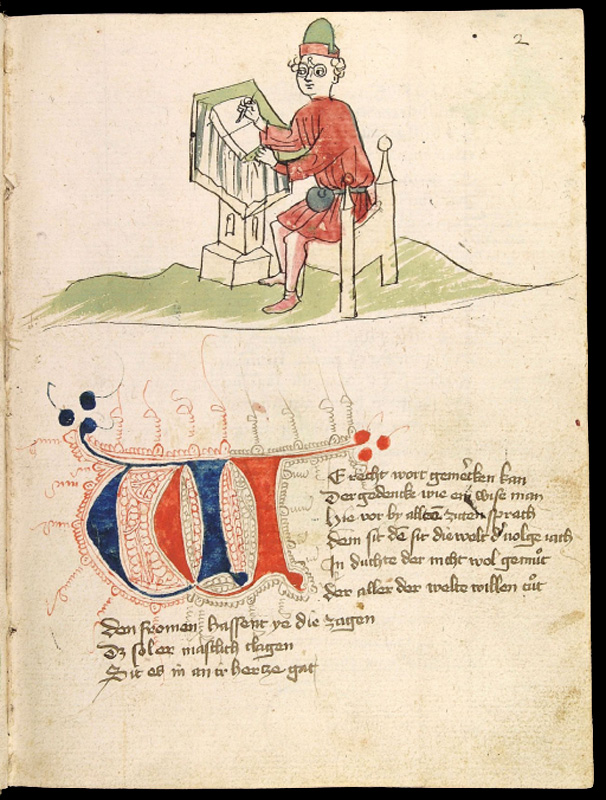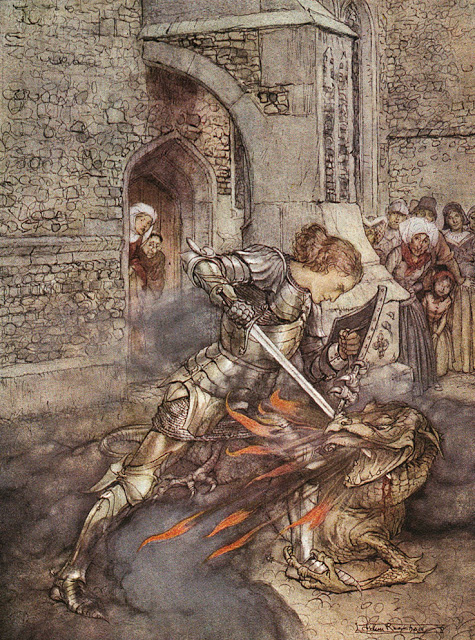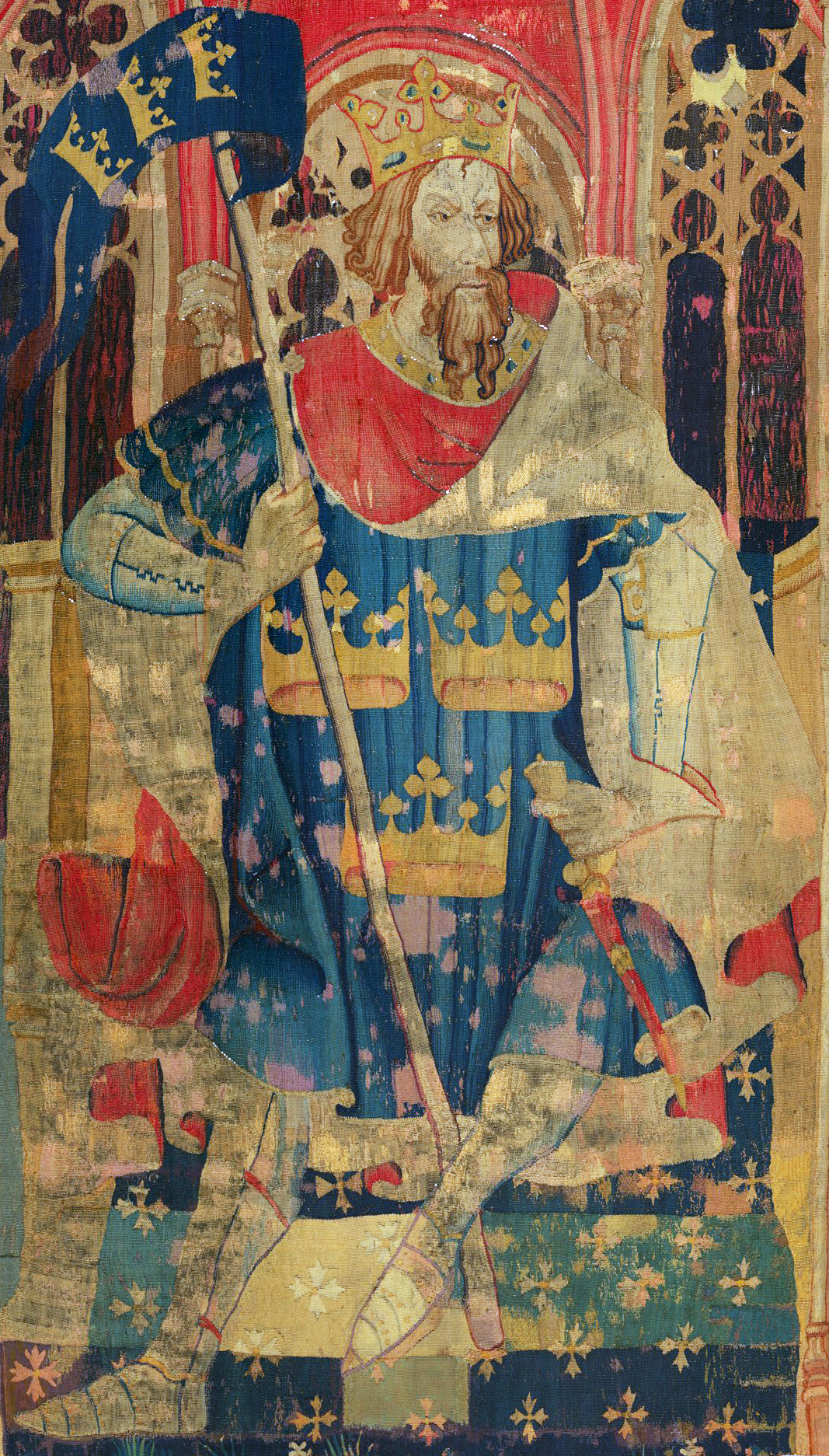|
Lanzelet
''Lanzelet'' is a medieval romance written by Ulrich von Zatzikhoven after 1194. History The poem consists of about 9,400 lines arranged in 4-stressed Middle High German couplets. It survives complete in two manuscripts and in fragmentary form in three others. The author is often identified with a Swiss cleric named in a document from 1214, though little else is known of him. He claims he translated ''Lanzelet'' from a ''welschez'' (Middle High German for French, but in this case probably Anglo-Norman) book brought to Germany by Hugo de Morville, one of the Crusaders who replaced Richard the Lionhearted as a hostage when the king had been arrested by Leopold V, Duke of Austria in 1194. ''Lanzelet'' is the first treatment of the Lancelot tradition in German, and contains the earliest known account of the hero's childhood with the Lady of the Lake-like figure in any language. The poem features a version of the hero's childhood, including the death of his father Pant (Ban) ... [...More Info...] [...Related Items...] OR: [Wikipedia] [Google] [Baidu] |
Ulrich Von Zatzikhoven
Ulrich von Zatzikhoven was the author of the Middle High German Arthurian romance '' Lanzelet''. Ulrich's name and his place of origin ( Zezikon in Switzerland) are only known definitively from the work itself. However, it is generally accepted that Ulrich is the same person as a lay priest ("''Leutpriester''") from Lommis in the canton of Thurgau by the name of ''Uolricus de Cecinchoven'', who occurs as a witness to a deed of gift dated 29 March 1214, executed by the family of the Counts of Toggenburg in favor of the monastery of St. Peterzell. The Middle High German verse romance ''Lanzelet'' is Ulrich's only known work, and is an imitation of an unknown Old French Arthurian romance. The hero of the work is Sir Lancelot, whose story had also been told a little earlier by Chrétien de Troyes">Lancelot">Sir Lancelot, whose story had also been told a little earlier by Chrétien de Troyes in his ''Le Chevalier de la Charrette'' (''Knight of the Cart''). However, the content of ... [...More Info...] [...Related Items...] OR: [Wikipedia] [Google] [Baidu] |
Lancelot
Lancelot du Lac (French for Lancelot of the Lake), alternatively written as Launcelot and other variants, is a popular character in the Matter of Britain, Arthurian legend's chivalric romance tradition. He is typically depicted as King Arthur's close companion and one of the greatest Knights of the Round Table, as well as a secret lover of Arthur's wife, Guinevere. In his most prominent and complete depiction, Lancelot is a beautiful orphaned son of King Ban of the lost kingdom of Benoïc. He is raised in a fairy realm by the Lady of the Lake while unaware of his real parentage prior to joining Arthur's court as a young knight and discovering his origins. A hero of many battles, quests and tournaments, and famed as a nearly unrivalled Swordsmanship, swordsman and Jousting, jouster, Lancelot soon becomes the lord of the castle Joyous Gard and personal champion of Queen Guinevere, to whom he is devoted absolutely. He also develops a close relationship with Galehaut and suffers ... [...More Info...] [...Related Items...] OR: [Wikipedia] [Google] [Baidu] |
Lady Of The Lake
The Lady of the Lake (, , , , ) is a title used by multiple characters in the Matter of Britain, the body of medieval literature and mythology associated with the legend of King Arthur. As either actually fairy or fairy-like yet human enchantresses, they play important roles in various stories, notably by providing Arthur with the sword Excalibur, eliminating the wizard Merlin, raising the knight Lancelot after the death of King Ban, his father, and helping to take the dying Arthur to Avalon after Battle of Camlann, his final battle. Different Ladies of the Lake appear concurrently as separate characters in some versions of the legend since at least the Post-Vulgate Cycle and consequently the seminal ''Le Morte d'Arthur'', with the latter describing them as members of a hierarchical group, while some texts also give this title to either Morgan le Fay, Morgan or Morgause, her sister. Names and origins Today, the Lady of the Lake is best known as the character called either Nimue ... [...More Info...] [...Related Items...] OR: [Wikipedia] [Google] [Baidu] |
Guinevere
Guinevere ( ; ; , ), also often written in Modern English as Guenevere or Guenever, was, according to Arthurian legend, an early-medieval queen of Great Britain and the wife of King Arthur. First mentioned in literature in the early 12th century, nearly 700 years after the purported times of Arthur, Guinevere has since been portrayed as everything from a fatally flawed, villainous, and opportunistic traitor to a noble and virtuous lady. The variably told motif of abduction of Guinevere, or of her being rescued from some other peril, features recurrently and prominently in many versions of the legend. The earliest datable appearance of Guinevere is in Geoffrey of Monmouth's pseudo-historical British chronicle ''Historia Regum Britanniae'', in which she is seduced by Mordred during his ill-fated rebellion against Arthur. In a later medieval Arthurian romance tradition from France, a major story arc is the queen's tragic love affair with her husband's best knight and trusted f ... [...More Info...] [...Related Items...] OR: [Wikipedia] [Google] [Baidu] |
King Arthur
According to legends, King Arthur (; ; ; ) was a king of Great Britain, Britain. He is a folk hero and a central figure in the medieval literary tradition known as the Matter of Britain. In Wales, Welsh sources, Arthur is portrayed as a leader of the Sub-Roman Britain, post-Roman Britons in battles against the Anglo-Saxons in the late-5th and early-6th centuries. He first appears in two early medieval historical sources, the ''Annales Cambriae'' and the ''Historia Brittonum'', but these date to 300 years after he is supposed to have lived, and most historians who study the period Historicity of King Arthur, do not consider him a historical figure.Tom Shippey, "So Much Smoke", ''review'' of , ''London Review of Books'', 40:24:23 (20 December 2018) His name also occurs in early Welsh-language literature, Welsh poetic sources, such as ''Y Gododdin''. The character developed through Welsh mythology, appearing either as a great warrior defending Britain from human and supernatura ... [...More Info...] [...Related Items...] OR: [Wikipedia] [Google] [Baidu] |
King Ban
Ban of Benoic (Old French: ''Ban de Bénoïc'') is a character in Arthurian legend. King Ban first appeared by this name in the ''Lancelot propre'' part of the 13th-century French Vulgate Cycle as the ruler of the realm in France named (Bénoïc; alternatively Benewic, Benoich, Benoit, Benuic, Benwick) and father of Sir Lancelot and Sir Hector de Maris, as well as brother of King Bors. Ban of Benoic largely corresponds to the other versions of the father of Lancelot, including Pant of Gen wis in the German '' Lanzelet'', Haud of Schuwake in the English '' Sir Lancelot du Lake'', and Domolot of Lokva in the Belarusian '. Role in Arthurian romances Ban's kingdom of Benoic is located at the border between Armorican Brittany and Gaul. With his wife Queen Elaine (''Élaine'', a sister of King Bors' wife Evaine), King Ban begets the future great knight Lancelot (birth name Galahad, ''Galaad''). Earlier, thanks to Merlin's magic, he sleeps with the Lady de Maris (''Dame des Mares''), ... [...More Info...] [...Related Items...] OR: [Wikipedia] [Google] [Baidu] |
Hugh De Morville, Lord Of Westmorland
Sir Hugh de Morville (died c. 1173) was an Anglo-Norman knight who served King Henry II of England in the late 12th century. He is chiefly famous as one of the assassins of Thomas Becket, Archbishop of Canterbury in 1170. He held the title Lord of Westmorland and of Knaresborough; his father was Hugh de Morville, Constable of Scotland. Westmorland Hugh is thought to have been his father's eldest son. He appears in the service of King Henry from 1158. University of Edinburgh historian Geoffrey W. S. Barrow identifies two charters were given by the younger Hugh in his capacity as Lord of Westmorland, one being read aloud to his court at his castle of Appleby on the upper River Eden. One of the witnesses was Harvard de Malnurs, Constable of Knaresborough Castle. Malnurs' rare surname may refer to a hamlet in the northern French province of Maine, now called La Malnoyere at La Rouaudière. Reginald de Beauchamp, who witnessed both charters, may have been a relative of Hugh's m ... [...More Info...] [...Related Items...] OR: [Wikipedia] [Google] [Baidu] |
Sebile
Sebile, alternatively written as Sedile, Sebille, Sibilla, Sibyl, Sybilla, and other similar names, is a mythical medieval queen or princess who is frequently portrayed as a fairy or an enchantress in the Arthurian legend and Italian folklore. She appears in a variety of roles, from the most faithful and noble lady to a wicked seductress, often in relation with or substituting for the character of Morgan le Fay. Some tales feature her as a wife of either King Charlemagne or Prince Lancelot, and even as an ancestor of King Arthur. Origins The character of Sebile has her earliest roots in the Ancient Greek figure of the virgin priestess and prophetess known as the Cumaean Sibyl. This Classic motif was later transmuted into a Christianized character named Sibyl featured in the Christian mythology of the Early Middle Ages. A further transformation during the Late Middle Ages eventually turned her (as summed up by Alfred Foulet) from Matter of France Queen Sebile first appears i ... [...More Info...] [...Related Items...] OR: [Wikipedia] [Google] [Baidu] |
Arthurian Legend
The Matter of Britain (; ; ; ) is the body of medieval literature and legendary material associated with Great Britain and Brittany and the legendary kings and heroes associated with it, particularly King Arthur. The 12th-century writer Geoffrey of Monmouth's (''History of the Kings of Britain)'' is a central component of the Matter of Britain. It was one of the three great Western story cycles recalled repeatedly in medieval literature, together with the Matter of France, which concerned the legends of Charlemagne and his companions, as well as the Matter of Rome, which included material derived from or inspired by classical mythology and classical history. Its pseudo-chronicle and chivalric romance works, written both in prose and verse, flourished from the 12th to the 16th century. Name The three "matters" were first described in the 12th century by French poet Jean Bodel, whose epic ' ("Song of the Saxons") contains the lines: The name distinguishes and relates the ... [...More Info...] [...Related Items...] OR: [Wikipedia] [Google] [Baidu] |
Lancelot, The Knight Of The Cart
''Lancelot, the Knight of the Cart'' () is a 12th-century Old French chivalric romance">-4; we might wonder whether there's a point at which it's appropriate to talk of the beginnings of French, that is, when it wa ... chivalric romance poem by Chrétien de Troyes, although it is believed that Chrétien worked on a story given to him by Marie of France, Countess of Champagne, Marie of France and he did not complete the text himself. It is the earliest known text to feature Lancelot as a prominent character, and the first to feature the love affair between him and King Arthur's wife Queen Guinevere. The story centers on Lancelot's rescue of Guinevere after she has been abducted by Meleagant, the malevolent son of King Bademagu, the ruler of the otherworldly Kingdom of Gorre. It deals with Lancelot's trials during the rescue, and his struggle to balance his duties as a warrior and as a lover bound by societal conventions. Chrétien's work impacted Arthurian legend, establishing ... [...More Info...] [...Related Items...] OR: [Wikipedia] [Google] [Baidu] |
Marie De Champagne
Marie of France (1145 – 11 March 1198) was a Capetian princess who became Countess of Champagne by her marriage to Henry I of Champagne. She ruled the County of Champagne as regent during Henry I's absence from 1179 to 1181; during the minority of their son Henry II of Champagne, Henry II from 1181 to 1187; and during Henry II's absence from 1190 to 1197. She was the daughter of Eleanor of Aquitaine and Louis VII of France. Early life Marie's birth was hailed as a "miracle" by Bernard of Clairvaux, an answer to his prayer to bless the marriage between Eleanor of Aquitaine and Louis VII. Marie was just 2 years old when her parents joined the Second Crusade to the Holy Land. With the birth of her sister Alice in 1150 instead of the desperately needed son and heir the couple hoped for, the marriage broke down and was annulled on 21 March 1152; Marie was 7 and Alice was not yet 2. Custody of the girls was awarded to their father as they were at that time the only heirs to the Fren ... [...More Info...] [...Related Items...] OR: [Wikipedia] [Google] [Baidu] |
Line (poetry)
A line is a unit of writing into which a poem or play is divided: literally, a single row of text. The use of a line operates on principles which are distinct from and not necessarily coincident with grammatical structures, such as the sentence or single clauses in sentences. Although the word for a single poetic line is '' verse'', that term now tends to be used to signify poetic form more generally. A line break is the termination of the line of a poem and the beginning of a new line. The process of arranging words using lines and line breaks is known as ''lineation'', and is one of the defining features of poetry. A distinct numbered group of lines in verse is normally called a '' stanza''. A title, in certain poems, is considered a line. General conventions in Western poetry Conventions that determine what might constitute line in poetry depend upon different constraints, aural characteristics or scripting conventions for any given language. On the whole, where relevant, ... [...More Info...] [...Related Items...] OR: [Wikipedia] [Google] [Baidu] |





